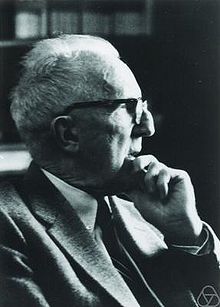H. C. Marston Morse | |
|---|---|
 Morse in 1965 (courtesy MFO) | |
| Born | March 24, 1892 Waterville, Maine, U.S. |
| Died | June 22, 1977 (aged 85) Princeton, New Jersey, U.S. |
| Nationality | American |
| Alma mater | Colby College Harvard University |
| Known for | Morse theory |
| Awards | Bôcher Memorial Prize (1933) National Medal of Science (1964) |
| Scientific career | |
| Fields | Mathematics |
| Institutions | Cornell University Brown University Harvard University Institute for Advanced Study |
| Thesis | Certain Types of Geodesic Motion of a Surface of Negative Curvature (1917) |
| Doctoral advisor | George David Birkhoff |
| Doctoral students | |
Harold Calvin Marston Morse (March 24, 1892 – June 22, 1977) was an American mathematician best known for his work on the calculus of variations in the large, a subject where he introduced the technique of differential topology now known as Morse theory. The Morse–Palais lemma, one of the key results in Morse theory, is named after him, as is the Thue–Morse sequence, an infinite binary sequence with many applications.
He was elected to the American Academy of Arts and Sciences in 1929,[1] the United States National Academy of Sciences in 1932,[2] and the American Philosophical Society in 1936.[3] In 1933 he was awarded the Bôcher Memorial Prize for his work in mathematical analysis. J. Robert Oppenheimer described Morse as "almost a statesman of mathematics."[4]
- ^ "Marston Morse". American Academy of Arts & Sciences. February 9, 2023. Retrieved June 1, 2023.
- ^ "H. Marston Morse". www.nasonline.org. Retrieved June 1, 2023.
- ^ "APS Member History". search.amphilsoc.org. Retrieved June 1, 2023.
- ^ A Conversation with J. Robert Oppenheimer on YouTube